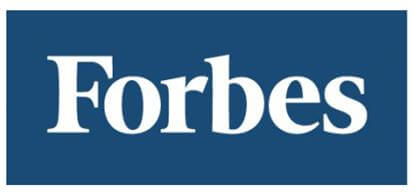Dinosaur or Dynamo? How to Stay Relevant in a Rapidly Changing World
Hasn’t the internet rendered public libraries nearly obsolete?
That was the question in my mind as I watched Patrick Losinski, CEO of the Columbus Metropolitan Library, receive his “CEO of the Year Award” from Columbus CEO Magazine.
I was wrong, at least about this library. Losinski and his team have done an excellent job re-inventing the Columbus Metropolitan Library (CML) in a changing environment and increasing its relevance.
Leaders of both for-profit and not-for-profit organizations can learn a few things from his story.
Losinski has been the CEO of the CML since 2002. The library has won numerous awards during his tenure (see here). I had an opportunity to sit down and talk with him about staying relevant in a rapidly changing world.
Envisioning the future
Losinski has been exploring the question, “What does the library of the future look like?” since he began his tenure as CEO in 2002. He and his team are well aware of the digital revolution and they are adapting accordingly; they are using the latest advancements in technology.
But they also recognize that, regardless of how sophisticated the technology becomes, the organization is serving people.Technology is just a useful tool that enables the library to fulfill its mission and better serve its customers’ needs.
Putting customers at the center
In the past, Losinski observed, “libraries were built as mausoleums for books.” They were designed to preserve and protect the books from light and other elements. Hence, libraries “were more conducive to growing mushrooms than inspiring people!”
So he and his team set out to change the environment, and create something healthy, inspiring, and relevant to the community and employees.
They realized that “circulating books” was no longer a meaningful metric of success. Instead, they chose to define success in terms of the impact the library is having on people’s lives.
They crafted the library’s mission and strategy based on the needs of the community, not the library’s historical product: Books.
The lesson here: No organization can afford to define what it does in terms of its products or services, especially in times of flux. Rather, an organization must define its purpose in terms of thecustomer needs it will satisfy.
A strategic plan for moving forward
The CML Strategic Plan is a piece of art in its simplicity, clarity and brevity (find here). It illustrates the essence of good strategy by focusing on customers’ highly important unmet needs that the library is uniquely well qualified to address, such as:
- Encouraging kids to learn and build a foundation for a successful life, by preparing them for kindergarten, teaching them how to read, providing homework help centers, etc.
- Creating the next generation library that works for people, by providing eResources, eBooks, streaming content, etc.
- Empowering people to reach their potential, by teaching life and job skills such as the GED, financial literacy, computer classes, and other classes through local universities.
Losinski pointed out that there is always a temptation to do the things that people applaud, “like offering free car washes.” But that would not be the best use of the library’s resources and capabilities.
He and his team recognized that the library, with branches in communities throughout Central Ohio, could play an important and unique role in addressing serious educational issues with excellence.
Good strategy transcends change
Bottom line: Despite tumultuous change, some things stay the same. Good strategy is marked by understanding:
- Who your target customers are.
- What important unsatisfied needs you can address especially well using your unique capabilities.
- How to innovate and use technology to improve operations and better address customer needs.
This is the way to stay relevant and thrive, whether you’re leading a public institution or a private company.
(This article first appeared in The Business Journals, March 25, 2016.)
 A Short Meditation on Customer Needs Prev post
A Short Meditation on Customer Needs Prev post 


